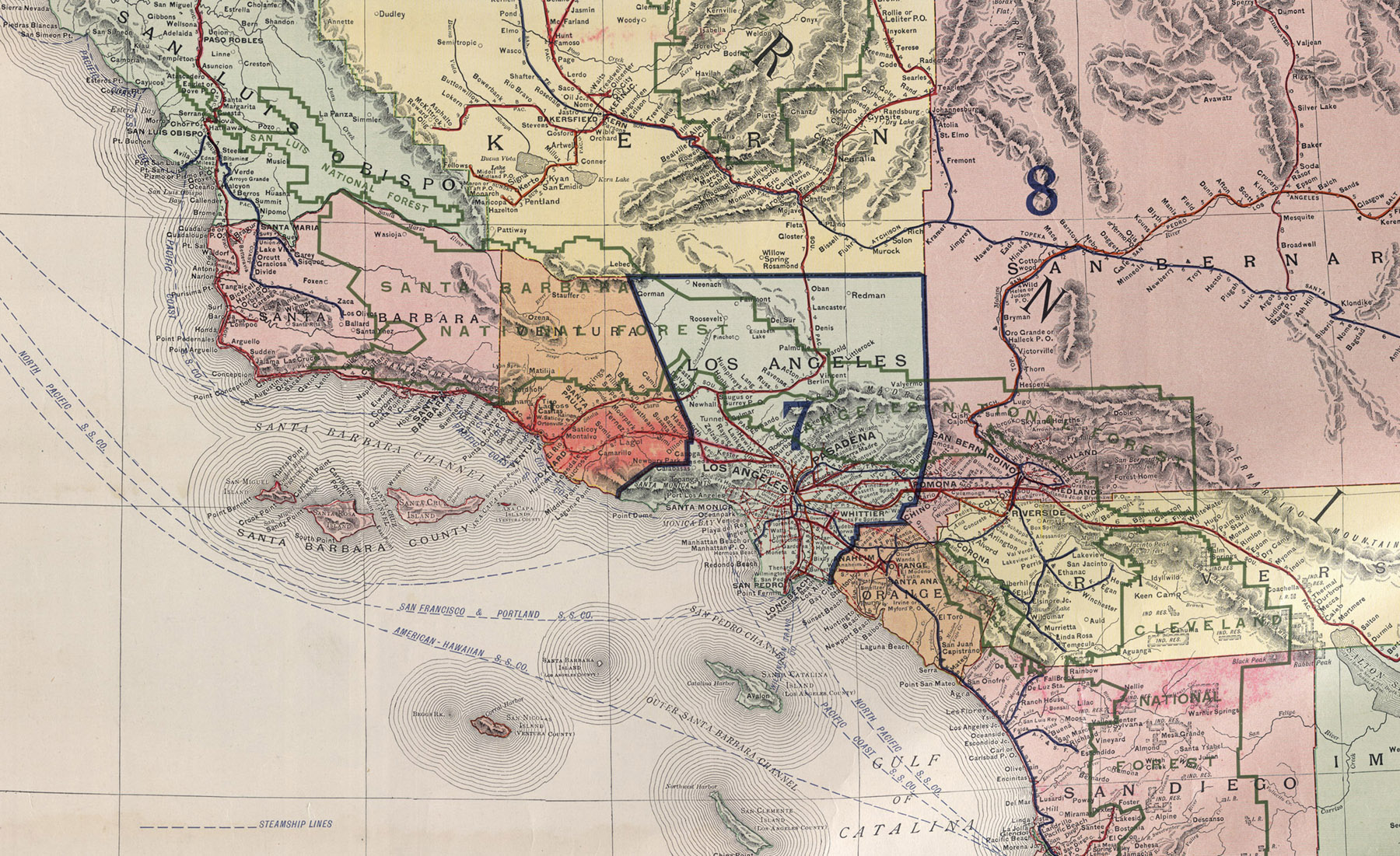Backbone Trail is a National Trail in the Santa Monica Mountains National Recreation Area. After more than 50 years in the works, the trail is finally complete. It runs for 67 miles from Will Rogers State Park to Point Mugu State Park. From majestic ocean-view peaks, chaparral-covered hills and winding canyons, the trail will keep you going at each turn. Several access points make this trail available for all skill levels at any duration.
#268 Box Canyon
In present day Anza-Borrego Desert State Park, Box Canyon marks what was once the only year-round route into California. The Southern Emigrant Trail became the first official road and wagon route in 1847. Pioneers had to use hand tools to carve along the canyon walls to create the trail. Today, a hike into the canyon will take you back to discover the rough terrain encountered by early settlers.
#266 Gaviota State Park
Gaviota State Park or 'Seagull' in Spanish is an impressive park on the Santa Barbara Coast. Hiking trails wind through sculpted canyons of the Santa Ynez Mountains covered in Spring wildflowers. Sandy beaches lie next to sea stacks to create an unforgettable rocky coastline that drops from mountain to sea. An historic railroad trestle soars above Gaviota Creek at 811 feet. It opened in 1901 and became a regular service route between Los Angeles and San Francisco.
#265 San Onofre State Beach
San Onofre State Beach is one of the most visited state parks in California. Established in 1971 by Governor Ronald Reagan, it is currently leased to the state from the United States Marine Corps. Perfect sandy beaches lie below dramatic sculpted cliffs creating a stunning landscape. The park is also home to a sacred Juaneño Native American village called 'Panhe' that is over 8,000 years old.
#262 Corona del Mar
Corona del Mar State Beach is one of the hidden treasures of Orange County. Meaning 'Crown of the Sea' in Spanish, this stretch of coast certainly lives up to its name. The beach is separated by dramatic cliffs into 'Big Corona' and 'Little Corona'. Big Corona offers white sandy beach perfect for sunbathing while Little Corona offers stunning rocky coves, tidepools and arches.
#261 Ramona's Marriage Place
Built by early settles José María Estudillo and his son José Antonio Estudillo, Casa de Estudillo is an historic adobe in Old Town San Diego that was one of the finest homes of its time. In 1884, Helen Hunt Jackson wrote 'Ramona', a romanticized novel based on the discrimination of Native Americans. It was called the finest novel written by an American woman at the time. It became so popular that people began traveling to California just to see the locations depicted in the book. San Diego capitalized on this influx and renamed the adobe 'Ramona's Marriage Place'.
#250 Garrapata State Park
Garrapata State Park is one of the most beautiful spots along Highway 1's Big Sur Coast. Two miles of stunning coast are preserved with trails that climb from the rocky coast to redwood forest. The park is a great spot to watch whales, seals and sea otters while hidden coves are perfect for solitude.
#247 Red Rock Canyon State Park
Red Rock Canyon State Park features a series of dramatic cliffs and rock formations in the Mojave Desert. The park preserves 27,000 acres and has been featured in many Hollywood Films. Kawaiisu Native Americans have lived here for thousands of years and used the colorful canyons as a meeting place for their trade route.
#245 El Matador State Beach
El Matador State Beach is one of the Jewels of Malibu. Its iconic rock formations, sea caves and coves make for an unforgettable coastal escape. This beach is a favorite among photographers with its limitless shore and winding bluff to sea trail.
#216 Palomar Mountain State Park
Palomar Mountain State Park is a beautiful conifer forest park high in the mountains of San Diego County. Pine trees soar among grassy meadows and provide sweeping overlooks of the valleys below. With peaks above 6,000 feet, it is a great place to escape the valley heat in summer and enjoy a chilly and sometimes snowy winter. Luiseño Native Americans lived and hunted here seasonally while gathering acorns. Many of the facilities were built during the Great Depression by the Civilian Conservation Corps.




























